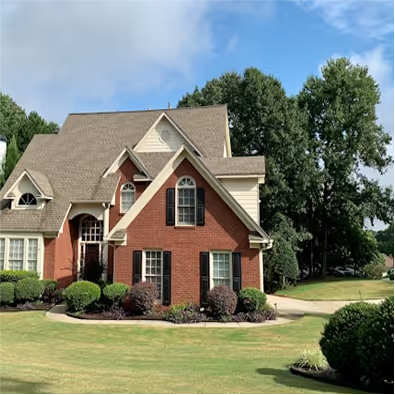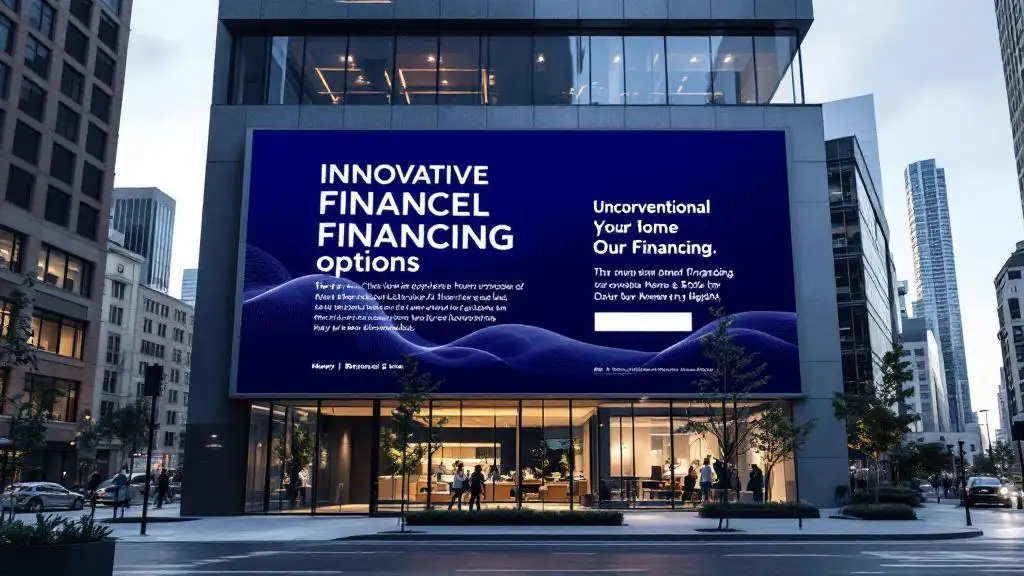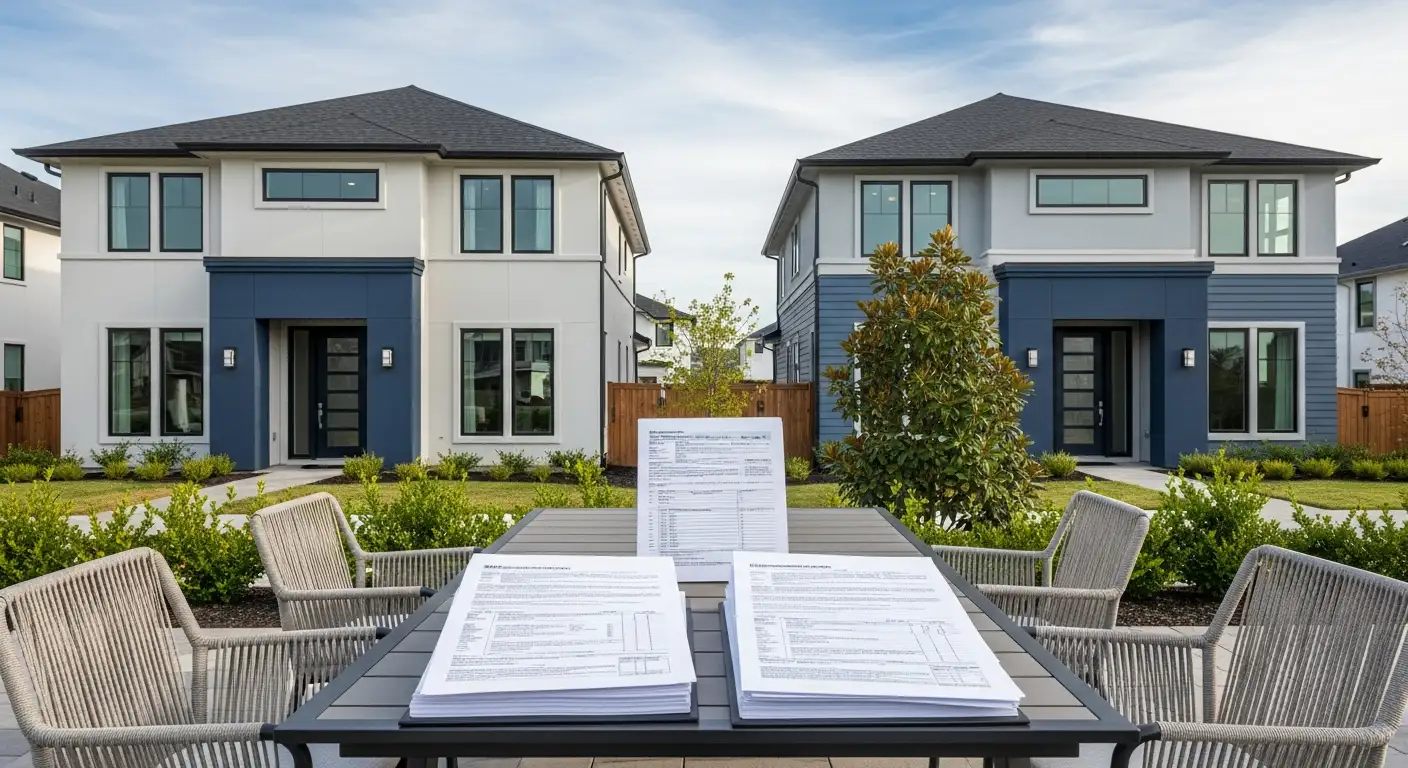Understanding Alternative Mortgage Options
For those seeking to purchase a home without the standard proof of income, traditional lenders often seem out of reach. However, the landscape of mortgage options has expanded to include various non-traditional pathways, making homeownership more accessible for self-employed individuals, investors, and those with irregular income. This guide explores the current trends, eligibility criteria, and strategic approaches to securing a mortgage without relying solely on conventional income documentation.
Current Landscape of No-Income Verification Mortgages
What is the current trend and availability of loans that do not require income verification?
Since the aftermath of the 2008 housing crisis, the landscape of no-income verification mortgages has undergone significant changes. Today, these loans are available mainly through specialized lenders such as non-QM lenders, portfolio lenders, credit unions, and private mortgage companies. Traditional banks like Chase or Wells Fargo have largely stepped back from offering no-doc or no-income verification products due to tighter regulations.
The loans that remain tend to have strict qualification criteria. Borrowers usually need to demonstrate substantial assets, high credit scores (typically above 700), and be prepared for larger down payments—often 10-20% or higher. These mortgages are predominantly used by self-employed individuals, real estate investors, high-net-worth individuals, and people with irregular or non-traditional income streams.
These products are diversified, including options like bank statement loans, which analyze 12-24 months of deposit history; asset depletion loans, which qualify based on liquid assets; and DSCR loans, focused on rental income potential.
Although they are less prevalent than before, no-income verification mortgages are still accessible for qualified borrowers willing to meet the higher financial requirements. Rates are generally higher—around 0.5-2% above conventional loans—reflecting the increased lender risk.
The overall market remains cautious but open for those with strong financial backing. Borrowers interested in this type of financing should prepare their documentation and work with specialized lenders to navigate the more rigorous approval process.
Overview of no-doc mortgage options in 2025
| Type of Loan | Main Qualification Criterion | Typical Borrower | Usage Focus | Notes |
|---|---|---|---|---|
| Bank Statement Loan | 12-24 months of deposit analysis | Self-employed, irregular income | Investment properties, personal use | Higher interest rates, large deposits |
| Asset-Based Loan | Liquid assets, liquid asset calculations | High-net-worth individuals | Real estate, investments | Larger down payments, higher credit score |
| DSCR Loan | Rental income analysis, debt-service ratio | Real estate investors | Investment property acquisition | Focus on income potential |
| NINA Loan | No income, no assets, for investors | Investors with assets | Rental income focused | Often requires significant assets |
This evolving landscape underscores the importance of working with specialized lenders and preparing a strong financial profile. Despite regulatory challenges, options remain for those with the right assets and credit scores, though at higher costs and stricter conditions.
Alternative Strategies for Qualifying Without Traditional Income Proof
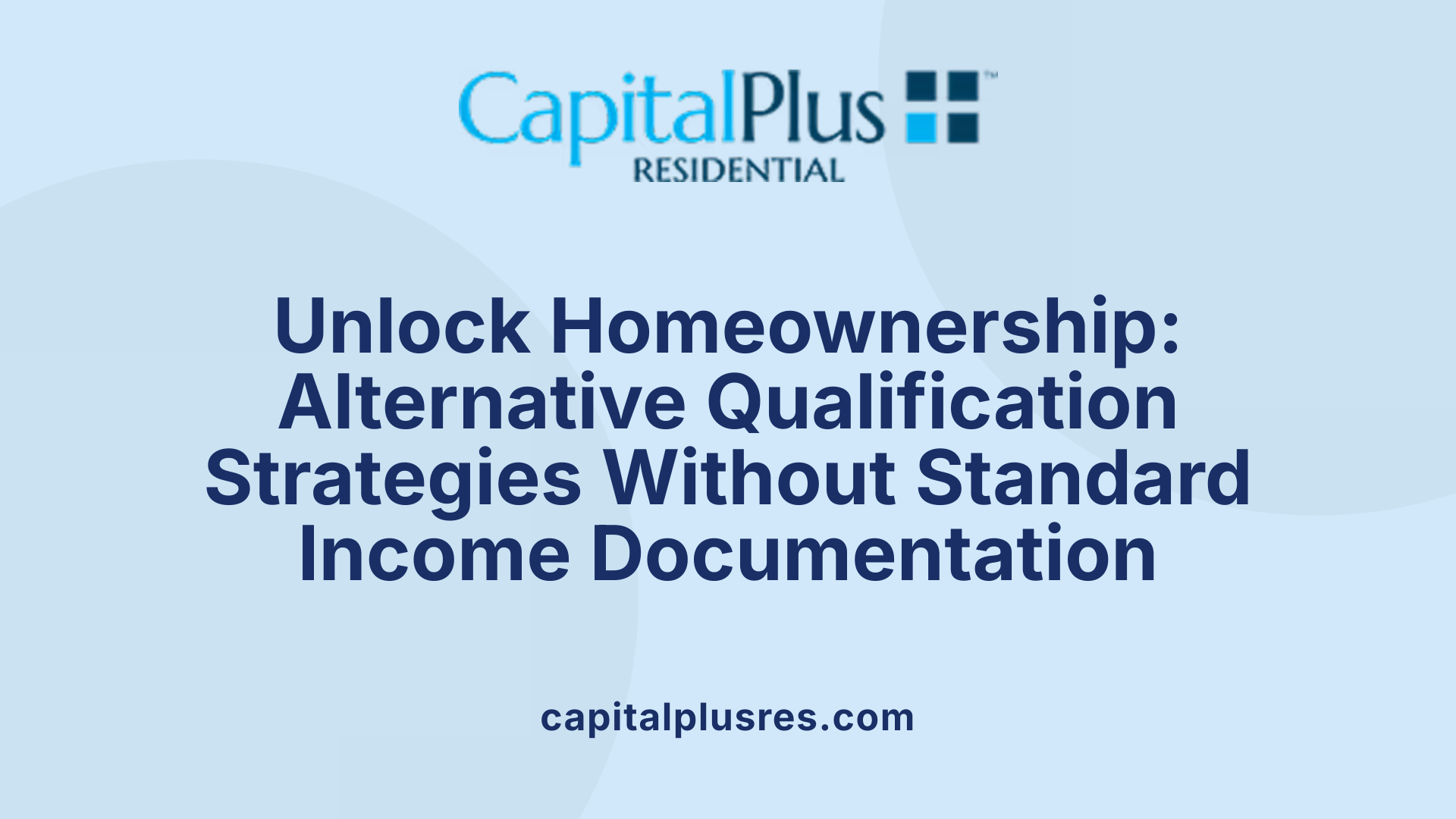
Are there alternative strategies for securing a home loan without standard income proof?
Yes, there are several options for homebuyers who cannot or prefer not to provide traditional income documentation like pay stubs or W-2s. These alternatives are especially relevant for self-employed individuals, investors, or those with irregular income streams.
One of the most common options is a bank statement loan, often called a bank statement mortgage. These loans analyze 12 to 24 months of deposit records to estimate income. Borrowers typically need to demonstrate consistent deposit patterns and substantial account balances. This method allows lenders to assess repayment ability without traditional proof.
Asset-based mortgages are another route, where lenders qualify borrowers based on their liquid assets instead of income. By calculating a theoretical income from assets—dividing the total liquid assets by a specific repayment period—lenders determine whether the borrower can afford the mortgage.
Additionally, rental income and projected income from investment properties can be used to qualify. For example, if a borrower owns rental properties, earning consistent rent, this income can sometimes be factored into the approval process, often through a debt-service coverage ratio (DSCR) analysis.
Specialized lenders and mortgage brokers are vital partners in these scenarios. They work with non-QM (non-qualified mortgage) lenders who cater to non-traditional income verification. These lenders often deal with programs like DSCR loans, asset depletion loans, or investor cash flow loans.
To succeed with these alternative strategies, borrowers should prepare by maintaining substantial savings, demonstrating secure non-traditional income streams, and ensuring a strong credit history. While these options offer flexibility, they often involve higher interest rates, larger down payments, and more stringent qualification requirements than conventional loans.
Working with a knowledgeable mortgage broker or lender familiar with non-QM products can significantly improve the chances of approval. They can guide applicants through the application process, help select the most suitable program, and assist with gathering the necessary documentation.
In a landscape where traditional income verification is sometimes challenging, leveraging these alternative strategies offers valuable pathways to homeownership, provided the borrower is prepared and informed.
Pros and Cons of No-Income Verification Mortgages

What are the advantages and disadvantages of obtaining a mortgage without income verification?
No-income verification mortgages, also known as no-doc loans, have become more specialized in recent years. For borrowers such as self-employed professionals, high-net-worth individuals, or investors with substantial assets, these loans offer certain benefits.
One significant advantage is the speed of approval. Since traditional income documentation like pay stubs or W-2s is not required, the approval process can be faster, especially when alternative assets or bank statements can be used for verification.
These loans also provide flexibility for borrowers with non-traditional income streams or irregular earnings. For example, self-employed individuals or those with seasonal or variable income can qualify based on assets, bank statements, or projected rental income, making homeownership more accessible.
However, there are notable drawbacks to consider. Because they are riskier for lenders, no-proof mortgages typically come with higher interest rates—often 1-5% above market rates. Down payments tend to be larger, frequently at 10-30%, and qualifying criteria are stricter, requiring high credit scores (usually around 700 or higher) and significant assets or savings.
Furthermore, regulatory changes post-2008 have limited the availability of true no-income verification loans. Many are now offered as non-qualified mortgages (non-QM) through specialized lenders, and recent regulations emphasize borrower ability-to-repay, indirectly requiring some form of income verification.
In summary, these mortgages can be advantageous for specific borrower profiles, providing faster and more flexible options. Nonetheless, they involve higher costs, stricter qualification demands, and are less widely available compared to traditional loans. Careful financial planning and working with experienced lenders are essential for navigating these options effectively.
| Aspect | Benefits | Drawbacks | Additional Details |
|---|---|---|---|
| Approval Speed | Faster approval process | Higher interest rates | 1-5% above market rates |
| Flexibility | Suitable for unconventional income streams | Larger down payments needed | Often 10-30% down |
| Qualification | Accessible to high-net-worth and self-employed | Stricter criteria (credit scores, assets) | Credit scores often >700 |
| Market Availability | Offered by specialized lenders | Limited post-2008 regulations | Mainly non-QM lenders |
| Cost | Access for unique profiles | Higher costs | Includes higher rates and larger down payments |
This evolving landscape emphasizes the importance of understanding individual financial situations and consulting with knowledgeable lenders to determine the most suitable home financing option.
Impact of No-Doc Mortgages on the Mortgage Process and Borrower Eligibility
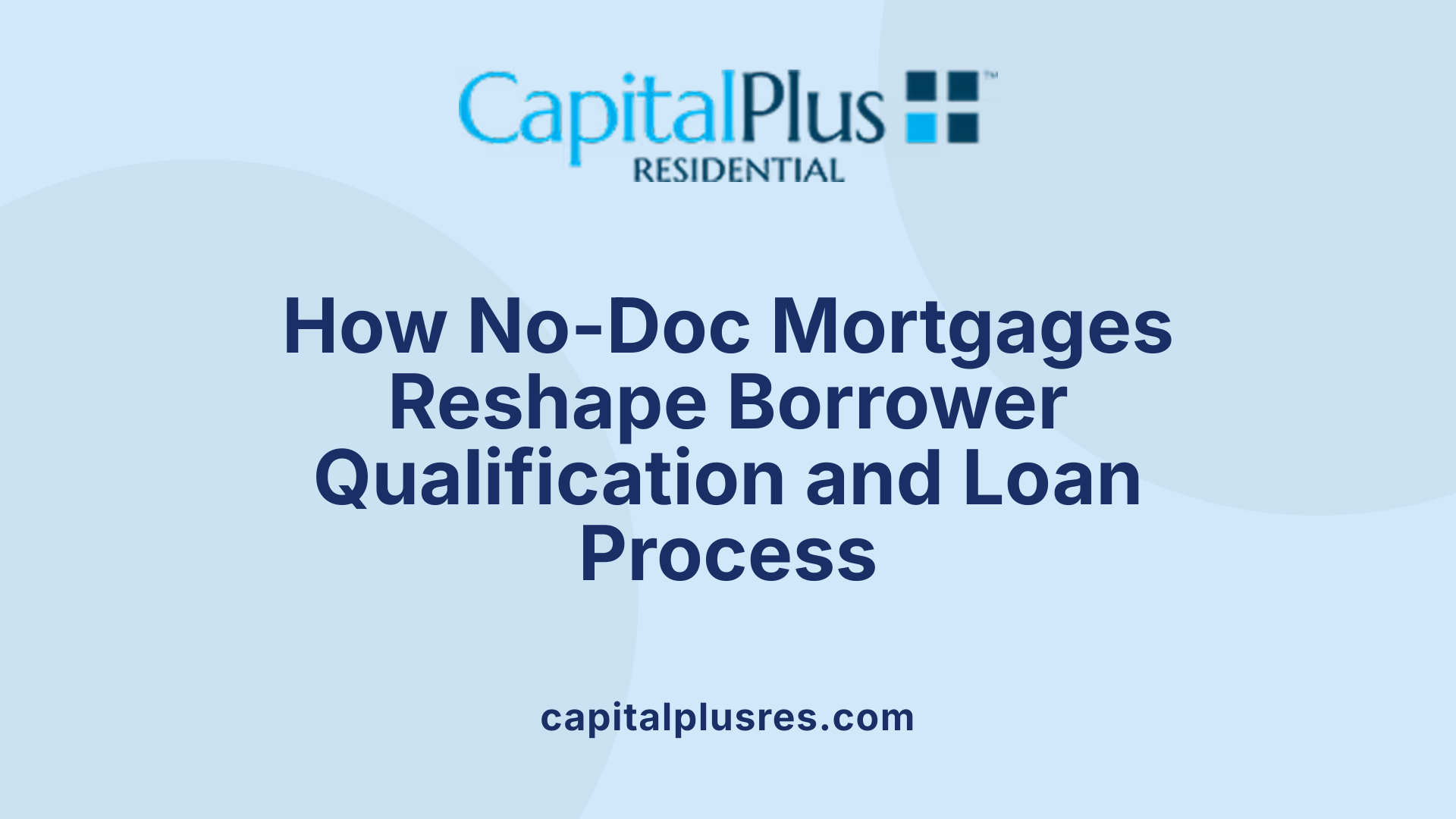
How do no-doc mortgages impact the mortgage process and qualifications?
No-doc mortgages, also known as no income verification loans, historically simplified the home loan application by minimizing or eliminating the need for traditional income proof such as pay stubs or W-2 forms. Instead, these loans relied heavily on the borrower's honor and the assumption of financial stability. Originally, they offered a faster and more flexible route for self-employed individuals, investors, or retirees with substantial savings.
However, following the financial crisis of 2007-2008 and subsequent regulatory changes, particularly the Dodd-Frank Act, the landscape for no-doc loans changed significantly. Lenders are now required to adhere to the ability-to-repay rule, which mandates verification of a borrower’s ability to repay the loan. As a result, true no-income verification mortgages have all but disappeared.
Today, lenders often employ alternative methods to verify income or financial stability. These include analyzing bank statements spanning 12 to 24 months, evaluating assets, or considering rental income potential for real estate investors. This shift means that qualifying for such loans generally requires higher credit scores—often at least 700—and larger down payments, typically 30% or more.
While the application process may still be more straightforward for certain high-net-worth individuals or those with significant assets, it is less about strictly eliminating documentation and more about leveraging alternative forms of verification. This change ensures that while borrowers with non-traditional income sources can still access financing, the process is more regulated and involves stricter qualification criteria.
In summary, no-doc mortgages have transitioned from simple, documentation-light loans to more complex, regulated products that balance flexibility with borrower protections. They impact the mortgage process by requiring lenders to verify financial stability through alternative means, which affects borrower eligibility by setting higher qualification thresholds, particularly in credit scores, asset holdings, and down payment size.
Types of No-Doc and No-Income Verification Loans
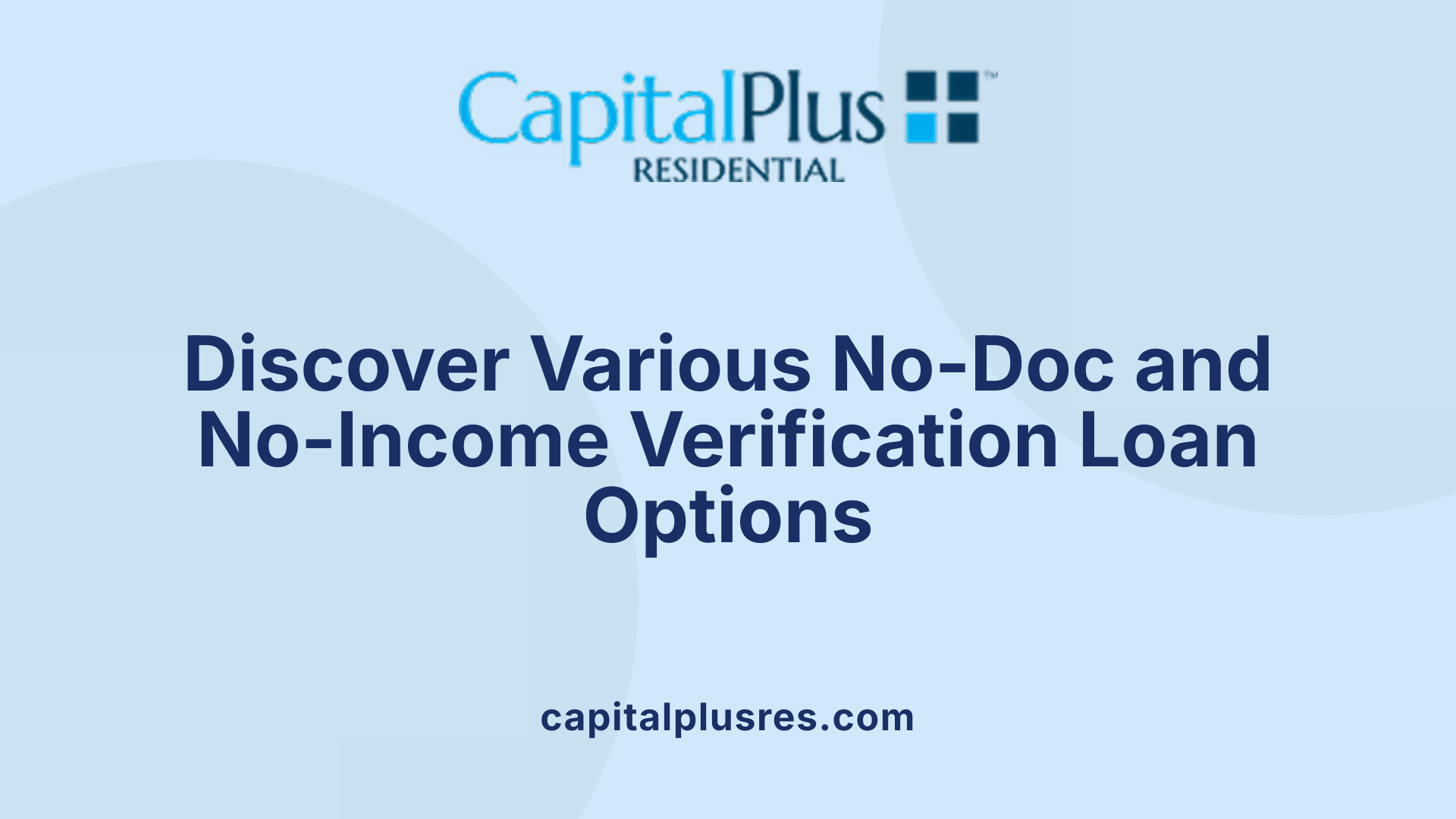
What are no-document (no-doc) mortgage options, methods, and requirements?
No-document (no-doc) mortgage options are specialized loans that do not require traditional proof of income, such as pay stubs or W-2 forms. Instead, lenders rely on alternative documentation to assess a borrower's ability to repay. These alternatives include bank statements, asset portfolios, rental income potential, or business financial records.
Historically popular before the 2008 financial crisis, no-doc loans have become less common due to tighter regulations but still serve specific borrower segments. Today, they primarily cater to high-net-worth individuals, real estate investors, or self-employed persons with irregular income streams.
To qualify for these loans, borrowers typically must meet stringent credit standards, often requiring a score of 700 or higher. They also usually need to make a sizable down payment, generally at least 30%, and demonstrate significant assets or savings.
Because of their structure, these loans are considered riskier for lenders, leading to higher interest rates, often between 0.5% and 2% above conventional mortgage rates. They often fall into the non-QM (non-qualified mortgage) category, which isn't bound by the same regulations as government-backed loans.
Different types of no-doc or alternative documentation loans include:
- Stated Income, Verified Assets (SIVA): Assess income via bank statements, with verification of assets.
- No Income, No Assets (NINA): Usually for real estate investors relying on projected rental income.
- No Income, Verified Assets (NIVA): Focuses on analyzing assets to determine the ability to pay.
- Stated Income, Stated Assets (SISA): Both income and assets are stated but not verified.
- Debt Service Coverage Ratio (DSCR) loans: Use property income to qualify investors.
While traditional no-doc loans are now rare, these alternative methods enable qualified borrowers to secure financing based on their financial profile rather than standard income proof.
Qualifying for a Mortgage Without Standard Income Documentation
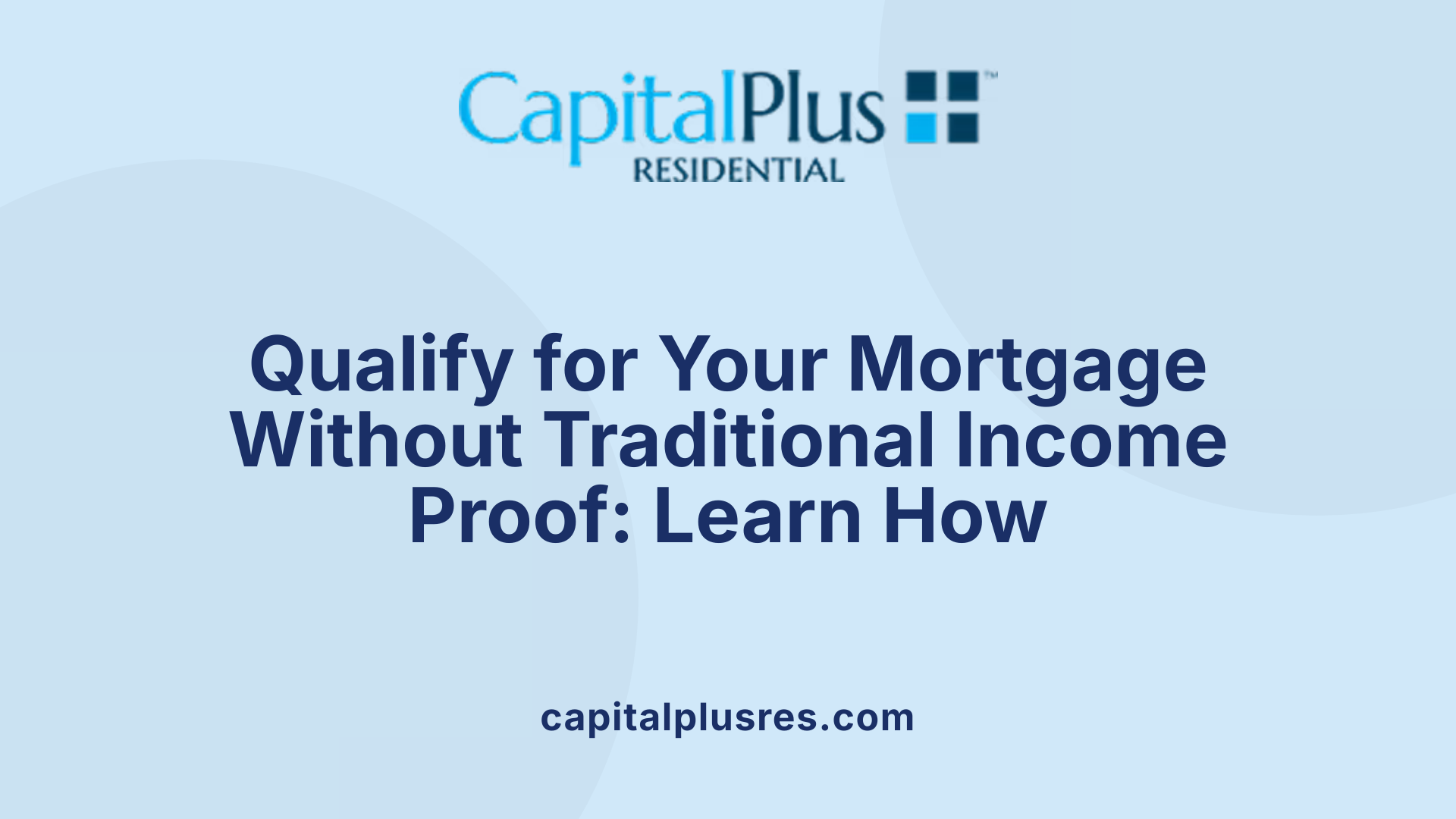
How can someone qualify for a mortgage without providing traditional income documentation?
Getting a mortgage without traditional income proof, such as pay stubs or W-2 forms, is now more challenging due to stricter regulations after the 2008 financial crisis. However, it is still possible, especially for high-net-worth individuals, self-employed professionals, or real estate investors.
One of the main strategies is demonstrating substantial assets and savings. Borrowers can show bank statements, investment accounts, or real estate holdings as proof of their financial capacity to repay the loan. These alternative documents help lenders assess cash flow and financial stability without requiring standard income documentation.
Various loan options cater to such borrowers, including bank statement loans and verified-assets loans. Bank statement loans analyze the deposit patterns over 12-24 months to estimate income, making them suitable for self-employed or variable income earners. Verified-assets loans, on the other hand, evaluate liquid assets—like savings and investments—and convert their total value into an estimated monthly income using specific formulas.
Lenders offering these loans generally require high credit scores, typically above 700, and significant down payments—often around 20-30%. These measures help mitigate the increased risk lenders take by not requiring traditional income proof.
Furthermore, working with specialized lenders such as portfolio lenders, non-QM lenders, or credit unions increases the chances of approval. These lenders are more flexible and sometimes can craft custom financing solutions based on an applicant’s unique financial profile.
It’s worth noting that while regulations have tightened, niche mortgage products remain available for those with substantial assets or irregular income streams. Proper documentation, a strong credit profile, and large down payments are essential components for securing such a loan.
In summary, qualifying for a mortgage in 2025 without standard income proof involves showcasing significant assets, utilizing alternative verification methods, and partnering with lenders experienced in non-traditional loans. This approach is particularly suited for high-net-worth individuals, self-employed professionals, and real estate investors seeking flexible financing options.
Regulatory Environment and Future Outlook for No-Doc Mortgages
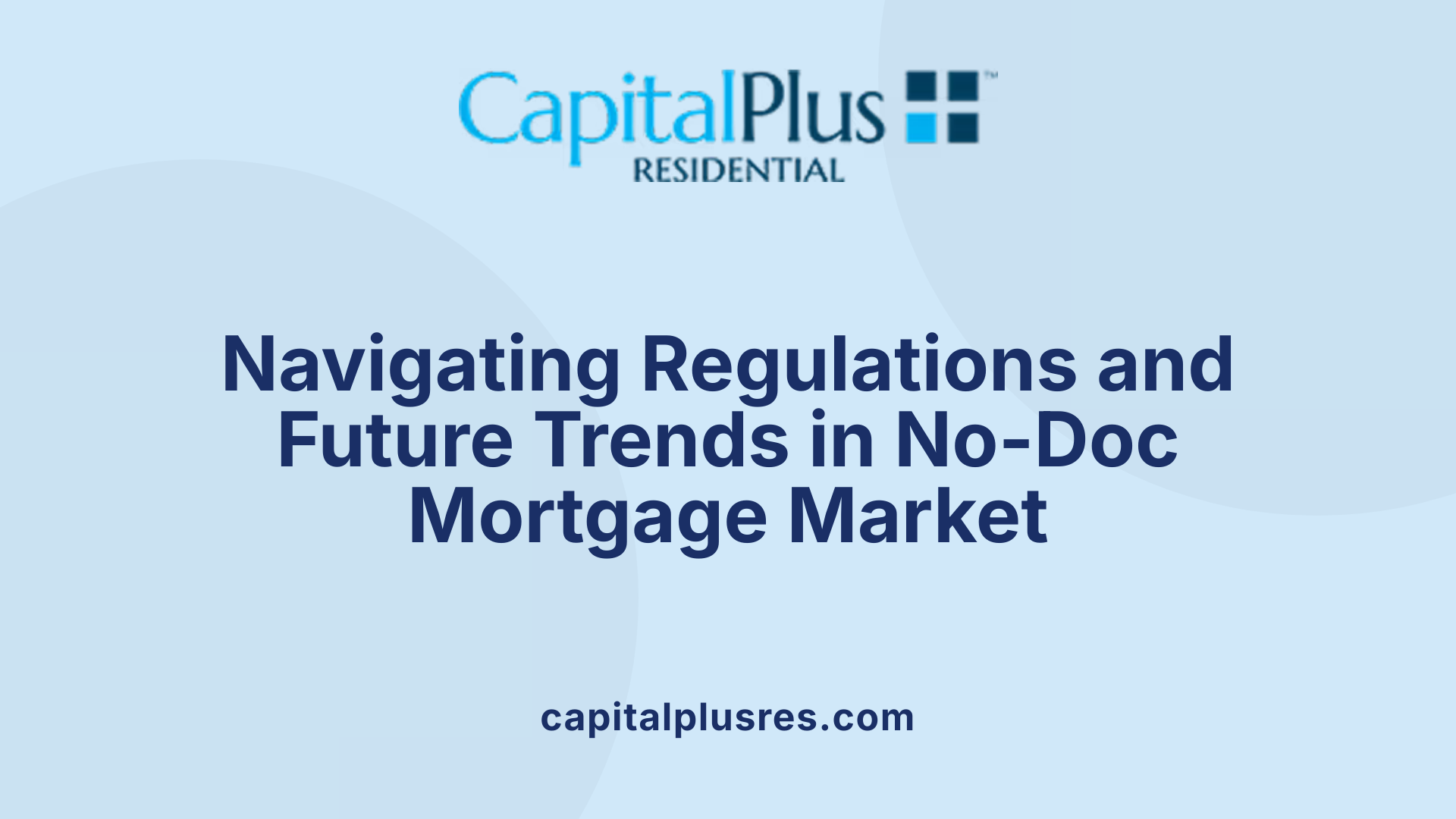
What is the current trend and availability of loans that do not require income verification?
In recent years, the landscape of no-doc mortgages has evolved significantly due to stricter financial regulations imposed after the 2007-2008 financial crisis. Traditional no-income verification loans, once more common, largely disappeared from the mainstream market post-crisis, but a niche segment persists. Today, no-income verification mortgages are primarily offered through specialized lenders such as non-QM lenders, credit unions, portfolio lenders, and private investors. These lenders are more cautious and typically require borrowers to demonstrate substantial assets, high credit scores (often above 700), and significant down payments, generally ranging from 10% to 20% or more.
Borrowers using these loans tend to be high-net-worth individuals, self-employed professionals, real estate investors, or those with unconventional income streams. Options such as bank statement loans, asset-based loans, and DSCR (debt service coverage ratio) loans are popular among this group. Although these products are not as widely available as before and are subject to tighter regulation, they are still accessible for borrowers who meet the criteria.
The current environment reflects a cautious approach by lenders, emphasizing financial strength and collateral over traditional income verification. Interest rates for these loans tend to be higher than those for conventional mortgages, and qualification standards are more stringent. Overall, while the ease of obtaining no-doc loans has diminished, demand among specific borrower groups continues to sustain a niche market.
This shift indicates a more stable but less accessible market, with added protections for both lenders and borrowers. The trend suggests ongoing adaptation in the mortgage industry, balancing risk management with the needs of niche borrower profiles.
Future market conditions for no-doc mortgages
Looking ahead to 2025 and beyond, the outlook for no-doc mortgages remains cautiously optimistic. Regulatory frameworks are likely to continue tightening, ensuring transparency and borrower protections. The market will probably see increasing reliance on alternative documentation methods—such as bank statements, asset verification, and rental income assessments—to accommodate self-employed and high-net-worth clients.
Interests in non-QM and private lending are expected to grow, driven by demand from specialized borrower segments. Innovations in digital verification, data analytics, and financial technology are also poised to make these loans more accessible while maintaining oversight.
Despite the more regulated environment, the fundamental need for flexible financing options for non-traditional borrowers persists. As a result, lenders may develop new products that balance risk and accessibility—for example, combining asset depletion models with technology-driven income verification.
The stability of this niche market will depend on economic conditions, property market dynamics, and regulatory policies. While stricter rules could limit volumes, they will strengthen overall market integrity. Borrowers with substantial assets and creditworthiness will likely find tailored options, maintaining the relevance of no-doc or low-doc mortgages as part of a diversified mortgage landscape.
In summary, the future of no-doc mortgages will hinge on continued innovation, regulatory oversight, and market demand. The balance between flexibility and security will shape product offerings and eligibility criteria, shaping their role in home financing well into the next decade.
| Aspect | Current Trends | Future Outlook | Additional Notes |
|---|---|---|---|
| Availability | Limited, niche market | Stable but more regulated | Focused on asset verification and high credit scores |
| Borrower Profiles | High-net-worth, self-employed | Same, with more innovative verification | Growing role of fintech solutions |
| Loan Types | Bank statement, DSCR, asset-based | Broader options with digital tools | Emphasis on proof of cash flow and assets |
| Regulatory Focus | Post-crisis tightening | Continued scrutiny, balancing risk | Enhanced borrower protections |
| Market Stability | Fluctuating but persistent niche | Likely steady with cautious growth | Driven by economic and regulatory factors |
Strategic Considerations and Final Thoughts
Securing a mortgage without traditional income proof is increasingly feasible through specialized, non-QM lending options. These pathways demand a comprehensive financial profile highlighting strong assets, excellent credit, and sizable equity, especially for real estate investors and high-net-worth individuals. Navigating this market requires working with knowledgeable lenders or brokers familiar with alternative documentation processes and staying informed about evolving regulations. While these loans generally entail higher costs and stricter qualification thresholds, they offer valuable flexibility, enabling broader access to homeownership for non-traditional earners. As the mortgage landscape continues to adapt, staying proactive and well-prepared will maximize your chances of success.
References
- No-Doc Mortgages: Are They Still Available?
- What Is A No-Doc Mortgage?
- No Income Verification Mortgage | Guidelines for 2025
- What Is a No-Doc Mortgage and Is It Still Available?
- What Is a No-Doc Mortgage, and Can I Still Get One? - Money
- No-Income Verification Mortgage: What Is It And Can You ...
- Stated Income Loans: Alternatives and Options for 2025
- What Is A No-Doc Mortgage?
- No Income Verification Mortgage | Guidelines for 2025
- No-Income Verification Mortgage: What Is It And Can You ...
Latest Blog
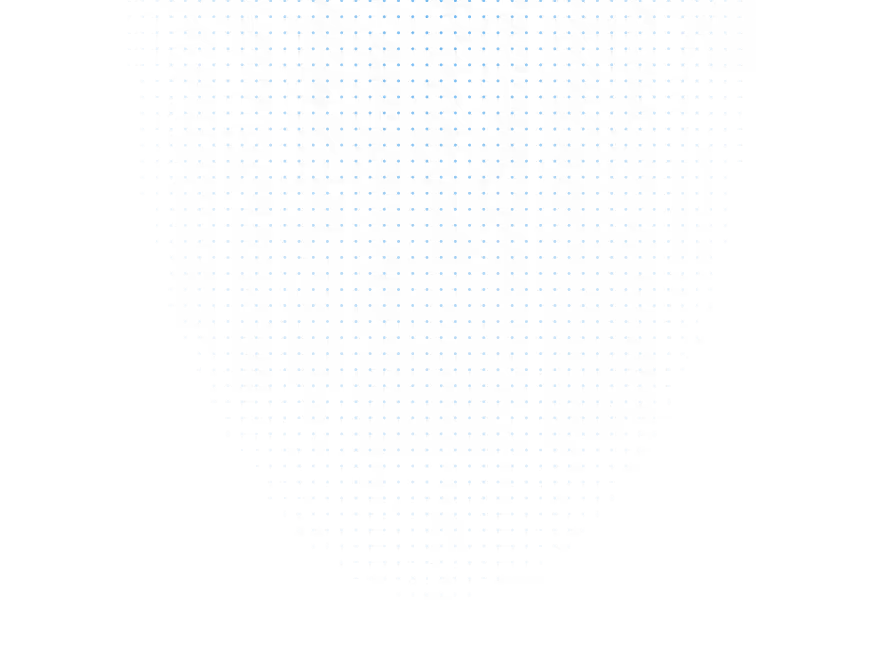

Get Pre-Approved Today
Start your secure online application now so you can get pre-approved for a mortgage (and close on your dream home) quickly within 5 minutes.


